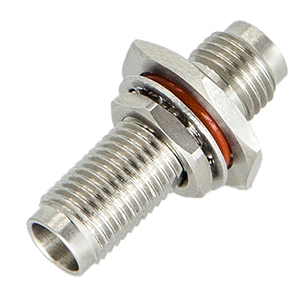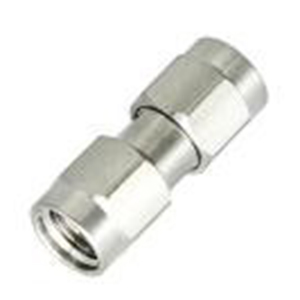The selection of RF coaxial connectors should consider both performance requirements and economic factors. The performance must meet the requirements of the system electrical equipment. Economically, it must meet the requirements of value engineering. In principle, the following four aspects should be considered when selecting connectors. Next, let’s take a look.
(1) Connector interface (SMA, SMB, BNC, etc.)
(2) Electrical performance, cable and cable assembly
(3) Termination form (PC board, cable, panel, etc.)
(4) Mechanical structure and coating (military and commercial)
1、 Connector interface
The connector interface is usually determined by its application, but it must meet the electrical and mechanical performance requirements at the same time.
BMA type connector is used for blind connection of low power microwave system with frequency up to 18GHz.
BNC connectors are bayonet-type connections, which are mostly used for RF connections with frequencies lower than 4GHz, and are widely used in network systems, instruments and computer interconnection fields.
Except for the screw, the interface of TNC is similar to that of BNC, which can still be used at 11GHz and has excellent performance under vibration conditions.
SMA screw connectors are widely used in aviation, radar, microwave communication, digital communication and other military and civil fields. Its impedance is 50 Ω. When using flexible cable, the frequency is lower than 12.4GHz. When using semi-rigid cable, the maximum frequency is 26.5GHz. 75 Ω has a broad application prospect in digital communication.
The volume of SMB is smaller than that of SMA. In order to insert a self-locking structure and facilitate fast connection, the most typical application is digital communication, which is the replacement of L9. The commercial 50N meets 4GHz, and 75 Ω is used for 2GHz.
SMC is similar to SMB because of its screw, which ensures stronger mechanical performance and wider frequency range. It is mainly used in military or high vibration environment.
N-type screw connector uses air as insulating material with low cost, impedance of 50 Ω and 75 Ω, and frequency of up to 11 GHz. It is usually used in regional networks, media transmission and test instruments.
The MCX and MMCX series connectors provided by RFCN are small in size and reliable in contact. They are the preferred products to meet the requirements of intensive and miniaturization, and have broad application prospects.
2、 Electrical performance, cable and cable assembly
A. Impedance: The connector should match the impedance of the system and the cable. It should be noted that not all connector interfaces meet the impedance of 50 Ω or 75 Ω, and the impedance mismatch will lead to system performance degradation.
B. Voltage: ensure that the maximum withstand voltage of the connector cannot be exceeded during use.
C. Maximum working frequency: each connector has a maximum working frequency limit, and some commercial or 75n designs have a minimum working frequency limit. In addition to electrical performance, each type of interface has its unique features. For example, BNC is bayonet connection, which is easy to install and cheap and widely used in low-performance electrical connection; SMA and TNC series are connected by nuts, meeting the requirements of high vibration environment on connectors. SMB has the function of quick connection and disconnection, so it is more and more popular with users.
D. Cable: Because of its low shielding performance, TV cable is usually used in systems that only consider impedance. A typical application is TV antenna.
The TV flexible cable is a variant of the TV cable. It has relatively continuous impedance and good shielding effect. It can be bent and has low price. It is widely used in the computer industry, but it cannot be used in systems requiring high shielding performance.
Shielded flexible cables eliminate inductance and capacitance, which are mainly used in instruments and buildings.
Flexible coaxial cable has become the most common closed transmission cable due to its special performance. Coaxial means that the signal and grounding conductor are on the same axis, and the outer conductor is composed of fine braided wire, so it is also called braided coaxial cable. This cable has a good shielding effect on the central conductor and its shielding effect depends on the type of braided wire and the thickness of braided layer. In addition to high voltage resistance, this cable is also suitable for use at high frequency and high temperature.
Semi-rigid coaxial cables replace the braided layer with tubular shells, effectively making up for the disadvantage of poor shielding effect of braided cables at high frequencies. Semi-rigid cables are usually used at high frequencies.
E. Cable assembly: There are two main methods for connector installation: (1) welding the central conductor and screwing the shielding layer. (2) Crimp the central conductor and the shielding layer. Other methods are derived from the above two methods, such as welding the central conductor and crimping the shielding layer. Method (1) is used in situations without special installation tools; Due to the high efficiency and reliable termination performance of the crimping assembly method, and the design of the special crimping tool can ensure that each cable maggot part assembled is the same, with the development of the low-cost assembly tool, the crimping shielding layer of the welding center conductor will be increasingly popular.
3、 Termination form
Connectors can be used for RF coaxial cables, printed circuit boards and other connection interfaces. Practice has proved that a certain type of connector matches a certain type of cable. Generally, the cable with small outer diameter is connected with small coaxial connectors such as SMA, SMB and SMC. 4、 Mechanical structure and coating
The structure of the connector will greatly affect its price. The design of each connector includes military standard and commercial standard. The military standard manufactures all copper parts, polytetrafluoroethylene insulation, and internal and external gold-plating according to MIL-C-39012, with the most reliable performance. Commercial standard design uses cheap materials such as brass casting, polypropylene insulation, silver coating, etc.
The connectors are made of brass, beryllium copper and stainless steel. The central conductor is generally coated with gold because of its low resistance, corrosion resistance and excellent airtightness. The military standard requires gold plating on SMA and SMB, and silver plating on N, TNC and BNC, but many users prefer nickel plating because silver is easy to oxidize.
The commonly used connector insulators include polytetrafluoroethylene, polypropylene and toughened polystyrene, of which polytetrafluoroethylene has the best insulation performance but high production cost.
The material and structure of the connector affect the processing difficulty and efficiency of the connector. Therefore, users should reasonably select the connector with better performance and price ratio according to their application environment.
Post time: Feb-07-2023



